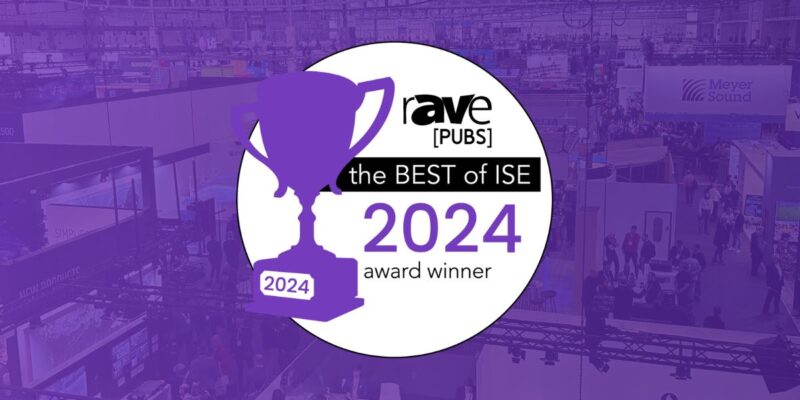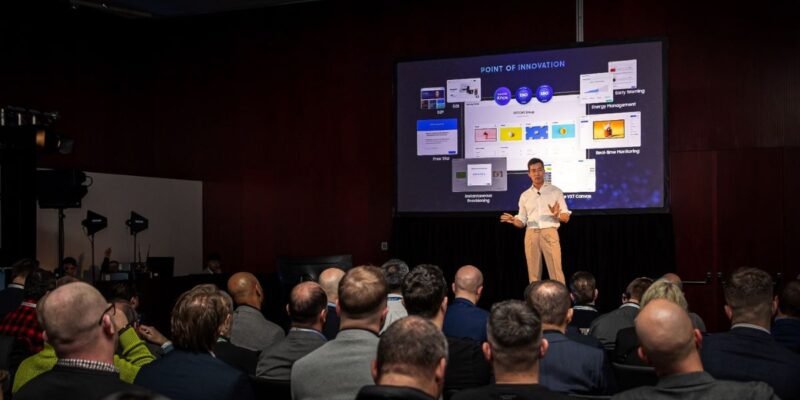Samsung at ISE 2019: The Wall, Artificial Intelligence-Based Scaling and Digital Signage
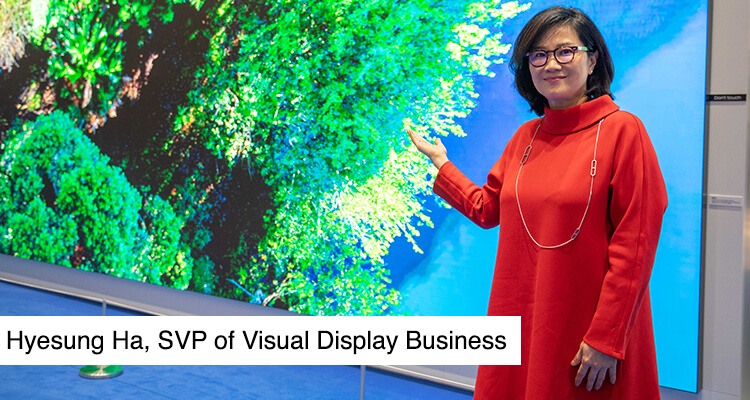 While at ISE 2019 in Amsterdam, I had the opportunity to talk to Hyesung Ha, senior vice president of visual display business at Samsung Electronics, to talk about some of the new products the company had introduced recently and were showing on their stand.
While at ISE 2019 in Amsterdam, I had the opportunity to talk to Hyesung Ha, senior vice president of visual display business at Samsung Electronics, to talk about some of the new products the company had introduced recently and were showing on their stand.
Samsung’s “The Wall” has been shown before, including at last year’s ISE, but that didn’t stop this latest version of the product from being one of the buzziest products at this year’s show. The Wall is based on Samsung’s MicroLED technology — which is manufactured by Samsung itself at a component level — and introduced the idea of using fine pixel pitch direct-view LED displays in different applications it hadn’t been used in before — primarily, digital cinema and residences. At 2000 nits peak brightness, despite the size, this means The Wall could certainly be used in media rooms or living rooms with a lot of ambient light, not just home theaters.
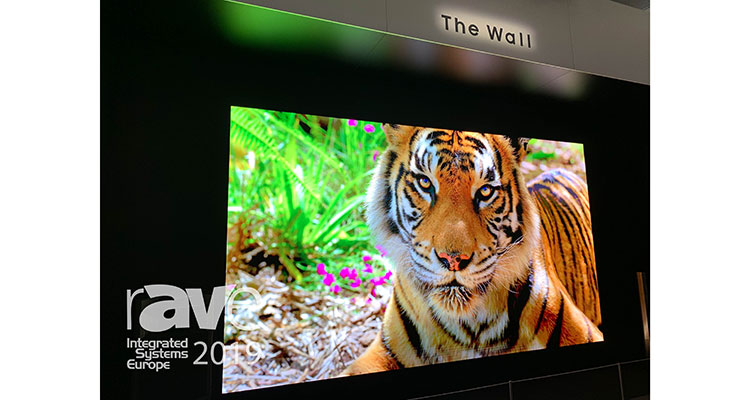 At ISE, Samsung was primarily talking about The Wall being used in residences as an alternative to projection. They had on stand a stunning 219” 6K version of The Wall, but it’s also available in a 292” 8K version, as well as a 2K 73” version. They showed it at CES last month in a 146” version and 219”. I suppose it does makes sense to stop calling something The Wall when it isn’t large enough to actually be an entire wall — and that’s somewhere between 73” and 146”, at least according to Samsung.
At ISE, Samsung was primarily talking about The Wall being used in residences as an alternative to projection. They had on stand a stunning 219” 6K version of The Wall, but it’s also available in a 292” 8K version, as well as a 2K 73” version. They showed it at CES last month in a 146” version and 219”. I suppose it does makes sense to stop calling something The Wall when it isn’t large enough to actually be an entire wall — and that’s somewhere between 73” and 146”, at least according to Samsung.
With the focus on The Wall in homes, Ha talked about how Samsung has also designed a unique user interface they’re calling “Ambient Mode,” which are essentially content templates that allow you to show, for example, personal photos or artwork. They have also formed partnerships and opened up an API for home automation with Crestron and Savant, as well as remote monitoring with ihiji, Domotz and OvrC.
Like other types of LED technology, The Wall is built using bezel-less cabinets and can be constructed, technically, into any size. Right now, issues with content resolution are likely to stop you from going much larger than the 8K display than anything else. The pixel pitch (measured from the center of one pixel to the center of the next) of the home version of The Wall is .84 millimeters, which is pretty amazing for a product that they say will ship by the end of H1 of this year. (The digital cinema version of The Wall is 2.5mm). Regretfully, there is still not pricing available, so we don’t know what it could possibly cost (other than just expensive), but we do know The Wall will only be sold through integrators for both commercial and residential applications.
The commercial version will also come with a content management system. Ha said that they envision applications such as digital signage, public venues and retail (obviously), as well as boardrooms, UCC and videoconferencing, education and presentations.
See a product video we shot about The Wall at ISE here:
The Wall wasn’t the only thing Samsung was showing at ISE either — they were also showing QLED displays, including an 8K version available in sizes 82” to 98”. These displays are quite slim, at only 40mm deep, can be displayed in portrait or landscape modes. They use local dimming and offer HDR10+ and 100 percent Color Volume. Ha explained that they were using “artificial intelligence-based image scaling algorithms” to scale HD or 4K resolution content up to 8K, which was demonstrated on stand. Scaling technology is going to be as important as display technology itself moving forward, because the display resolutions seem to be advancing faster than content resolutions and more notably, bandwidth, can keep up with.

See a product video we shot on the new QLED displays, including the AI scaling, here:
Finally, they showed what Ha said was her favorite product on-stand, which were new digital signage displays — OMN or OMN-D. These 4K displays, available in 46″ or 55″ versions, are very slim and can be used in a dual-sided version, which is designed for a specific retail application — window displays. One side of the OMN-D is 3000 nits, for the sunlight facing side, while the other, which faces the store itself, is 1000 nits. Clever.
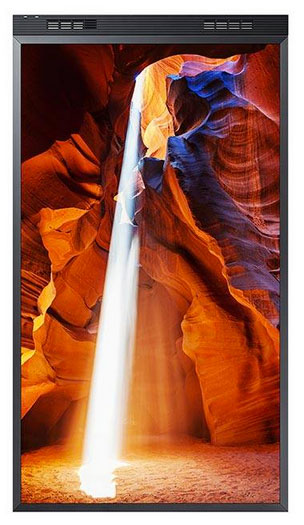
See a product video we took on the OMN / OMN-D here:
Digital signage is Samsung’s bread and butter — according to IHS, they hold 34.7 percent marketshare in Europe and 25.7 percent marketshare worldwide, in the digital signage market.
Samsung had several other products at ISE, which we took product videos of, so you can see all of those on our ISE 2019 MicroSite, here.



